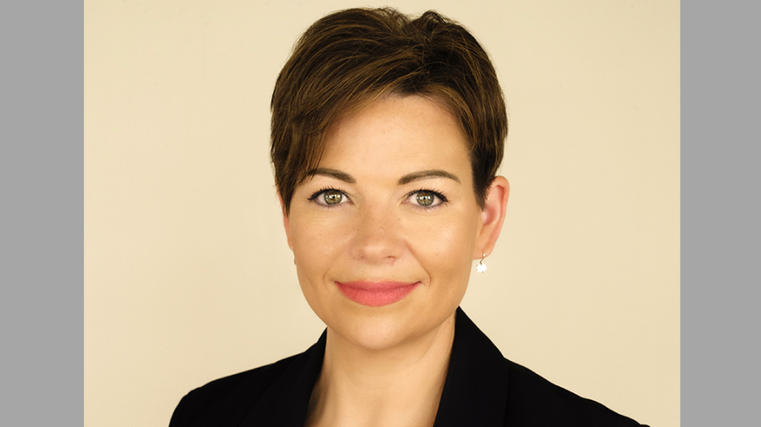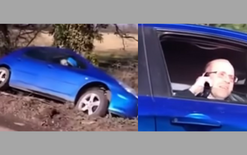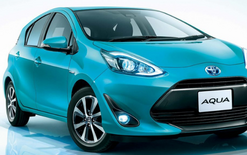Steering car industry through ‘pivotal time’

Aimee Wiley is predicting the government’s clean-car programme will continue to bring the biggest challenges for the new-vehicle industry this year as she settles into her role as chief executive officer of the Motor Industry Association (MIA).
She started with the MIA this month and is excited about her new job, which comes at a “pivotal time” for the sector.
Wiley, pictured, and her predecessor David Crawford, who is retiring in mid-2023, are working together – along with MIA president Simon Rutherford – over the coming three months to ensure a smooth transition for the association.
Prior to joining the MIA, Wiley was the low-emissions vehicles programme director at Waka Kotahi New Zealand Transport Agency where she worked on the clean car discount and clean car standard.
She told Autofile that those policies, which aim to bring more zero and low-emissions cars into the fleet, will likely remain as a key focus for the association moving forward and will continue to require “the right input, by the right people, at the right time”.
“I think the government’s overall intent of the clean-car policies represents an important shift toward addressing urgent climate considerations.
“Over the past couple of years, regulatory policy change has been significant and hurried, leaving very little time for industry to prepare and adapt.
“Looking forward, a balance between – and focus on – beneficial outcomes that are both realistic and achievable for the industry will be key.
“The fact that I worked on the clean-car programme last year alongside the policy team at Waka Kotahi and the Ministry of Transport can only help.
“Knowledge of the clean-car policies, systems and processes, which in time will be combined with industry feedback from members about these policies in operation, will ultimately benefit both the MIA and policy decision-makers when we all work together in the future.”
Part of finding the right solutions is knowing who to ask and getting the correct people around the table at the right time because “that’s when the magic happens”.
She adds: “We all want policies that lead to a cleaner environment in a sustainable way that doesn’t put the industry, market or jobs at risk.”
Wiley’s appointment to the MIA was announced at the beginning of March, and she welcomes the three-month transition into the chief executive role because it will allow her to meet members and get up to speed on industry matters.
After spending more than six years with Ford Australia working on product development for the Asia-Pacific market, she decided to shift back here with her husband and two children in 2019.
Wiley describes the decision as “bittersweet” because, with no vehicle manufacturing in New Zealand, she feared it might spell the end of her career in the automotive industry.
“After we returned, I initially took on a couple of roles in other industries and then had the opportunity to work with the clean car discount and standard.
“I’m passionate about the motor industry. It’s an exciting role for me because it’s a pivotal time in terms of electrification, product safety and development, automation, and dealing with climate change-driven changes in consumer preferences.”
“I’ve got big shoes to fill with David retiring, but I’ve also got a lot of what the MIA is looking for in terms of skills and experience.
“The role is exciting. It offers a rare and unique opportunity to leverage my key strengths and experience for mutual benefit and growth.”
She describes the opportunity for a transition period before Crawford leaves as “refreshingly different” compared to some of her previous roles and it’s an opportunity “I’m planning on taking full advantage of”.
Industry experience
Wiley spent time with Ford NZ early in her career, working as a marketing finance analyst from 2005-07 before later becoming part of the blue-oval’s team across the Tasman in 2012.
She was based in Melbourne and predominantly worked on the global T6 programme developing Everest and Ranger models for different markets.
“I really enjoyed my time working in the Asia-Pacific product development team with Ford. A truly global programme, we had teams spanning the planet, collaborating on these vehicles, and it brought many different and unique perspectives to the development programme.
“It touched on a lot of design and regulatory issues – and different market considerations – as well as picking up various design features around consumer preferences. By its nature, product development is very future orientated, typically looking ahead by between five and 15 years.
“That experience has also got to be of some benefit to my role with the MIA because it means I’m not starting from ground zero with the industry.”
Wiley is looking forward to learning more “from the best in the business” about the industry in New Zealand and issues it faces, noting the automotive space is more collaborative than some work environments she’s been in. She describes people in automotive as being “genuinely innovative”.
Her appointment makes her the MIA’s first female chief executive officer. She notes female leaders in the traditionally male-dominated automotive world are still relatively uncommon.
“I’m proud to have broken a glass ceiling as such, but my whole career has mostly been in male-dominated industries. The gender aspect isn’t something I particularly consider.
“Gender isn’t an issue for me. It’s more about acknowledging the people, embracing the ideas they bring and adapting style to get the best out of everybody regardless of gender.”
Eager driver
A passion for vehicles has burned within Wiley since childhood.
She has driven “every car you can imagine” and is always curious to find out more about new vehicles on the market.
She’s impressed by how vehicles have come along “in leaps and bounds” in almost every way over recent times – be it the quality, finishing, technology or how they handle.
Her current drive is a Toyota RAV4 hybrid. “I absolutely love it,” she enthuses. “I’ve just switched from a Jeep and it’s impressive.
“I’m fortunate to have had the benefit of driving many cars over the years from most of the major traditional brands. The most memorable include a Mustang GT500 soft top on the Lara [You Yangs] proving ground near Melbourne. That was awesome.
“I love driving lots of different cars. If I travel somewhere, I always rent one that I haven’t driven before. When I first get in, I’ll sit there and have a good look around. From the technology to the finishing, I notice the details.
“I’m usually amazed at the extent of change from one model year to the next nowadays. If you compare 2020 models from most brands with their 2023 equivalents, they’re incredibly different now.”
Wiley’s early driving experience came at her parent’s property in Manawatu, although she recalls having to master some automotive basics before relatives allowed her to be fully unleashed behind the steering wheel.
“I can remember being 14 and desperate to book my learner’s licence test for the day I turned 15 because I couldn’t wait to be able to drive on roads. I used to hound everyone in the family to teach me to drive from about the age of 11 and finally someone caved in when I was around 13.
“However, I had to learn how to do an oil and filter change, be able to change a tyre and reverse through an obstacle course before they would let me drive forwards. As a result, I can probably still reverse better than I can drive forward.
“There were a lot of vehicles around, but it was usually only the old bombs that I got to drive. I used to offer to babysit for people if they’d let me have a driving lesson. I just really liked driving.”
Her first car was a red Mazda Familia. She recalls polishing it up after cutting the paintwork with Jif, a household cleaning product, when the usual cutting compound from her local automotive shop failed to work.
“It’s funny what you do when you’re 15. But I was so proud of my first car and the Jif brought the Mazda back to almost its original red colour.”
Today, Wiley continues to polish up her knowledge of issues affecting the new-vehicle industry in New Zealand in what has the potential to be a challenging year for the MIA’s members as well as the broader economy.
“I’m excited about the people I’ll be working with. So far, I’ve found that it’s a very positive environment, which is important when we think we’re in an election year, facing a possible recession and tackling a cost-of-living crisis.
“Those things can cast a shadow, but so far everyone has been very upbeat, which is quite refreshing and certainly not true of every industry. It’s an exciting time to join the MIA and I’m looking forward to my new role.”





